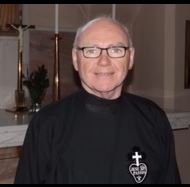I had one of my brief trips to Dublin recently for a couple of meetings. I was travelling two days after Brexit and when I arrived into Dublin Airport, Terminal 2, the signs through Passport Control had already been changed. Signs that had previously directed disembarking passengers to EU and Non-EU, now directed us to EU and British Citizens, and Non-EU. I presume that these will change back again at the end of this year to what they were before, and I will have to join the Non-EU queue. I also couldn’t help but notice that the Non-EU queue was much longer and much slower than the EU queue, and that there wasn’t the option of the E-gates which I have been using in recent times, and which were very efficient. If you haven’t used an E-gate before, all you do is slip your EU passport into a slot, look at the camera for a few seconds, retrieve your passport, and go. Nothing simpler. So, I can’t say I’m looking forward to joining the long queues again when Brexit takes full effect.
Even though my grandparents were Irish, Connemara on my mother’s side and Sligo on my father’s side, and even though I have lived in Ireland for 30 of my 68 years, I have never considered myself to be anything other than Scottish. Now, however, I am seriously considering applying for an Irish passport. The only thing stopping me is trying to find the necessary proofs that would be required for my application to be successful. For one year only, 1995-96, during my term as Novice Master, I lived in Sligo, in the Passionist Monastery at Cloonamahon, near Collooney, just three miles out of Sligo Town. I loved to wake up in the morning and look out of my window at the table top of Ben Bulben, and to climb it often enough, after visiting the grave of WB Yeats in Drumcliffe Parish Church Cemetery at the foot of the mountain, before making the ascent. His headstone is inscribed with his famous self-penned epitaph: "Cast a cold eye on life, on death, horseman, pass by."
During my time in Sligo I made some attempts to trace birth and baptism records for my paternal great-grandparents, my great-grandmother being from Ross’s Point, and my great-grandfather being from a small village called Magheraugh (I think that’s the right spelling) near the Sligo-Donegal border. I even searched local church graveyards looking for tombstones with the name Keevins on them, but all to no avail. I think Keevins is one of those names that may have changed it’s spelling after my great-grandparents emigrated to Scotland. In fact, I got quite excited a few years ago when my grand-niece, with the help of her teacher, tried to trace her family tree, and came up with the possibility that we may have been connected to another Irish poet, one of my favourites, called Patrick Kavanagh, whose grandfather was called Kevany, and which for some reason became Kavanagh at Patrick’s baptism. In his poem The Great Hunger, Patrick Kavanagh has one of my favourite lines of all time, and something I often quote at Mass, that God is in the bits and pieces of every day – isn’t that wonderful! Later on, with the dawn of digitisation, in the population census of 1911, I discovered Keevins’s in Ballymote that seemed to hold great promise of being connected to us. Ballymote is the town in Sligo where Brother Walfrid, the founder of Celtic Football Club, was born, and the town now boasts a sculpture of him in the local park. Brother Walfrid’s surname was Kerins, so, perhaps the doyen of Scottish sport’s journalists isn’t the only famous Keevins. Hopefully I will find the time and the energy at some other time to trace my ancestors and find the necessary proof to claim my Irish passport, even if only to avoid the airport queues. In the meantime, to recognise God's presence in all our everyday experiences, situations and relationships, read this:
". . . Men build their dreams as they build their circles of friends.
God is in the bits and pieces of Everyday.
A kiss here and a laugh again, and sometimes tears;
A pearl necklace around the neck of poverty” (The Great Hunger – Patrick Kavanagh).

 RSS Feed
RSS Feed
